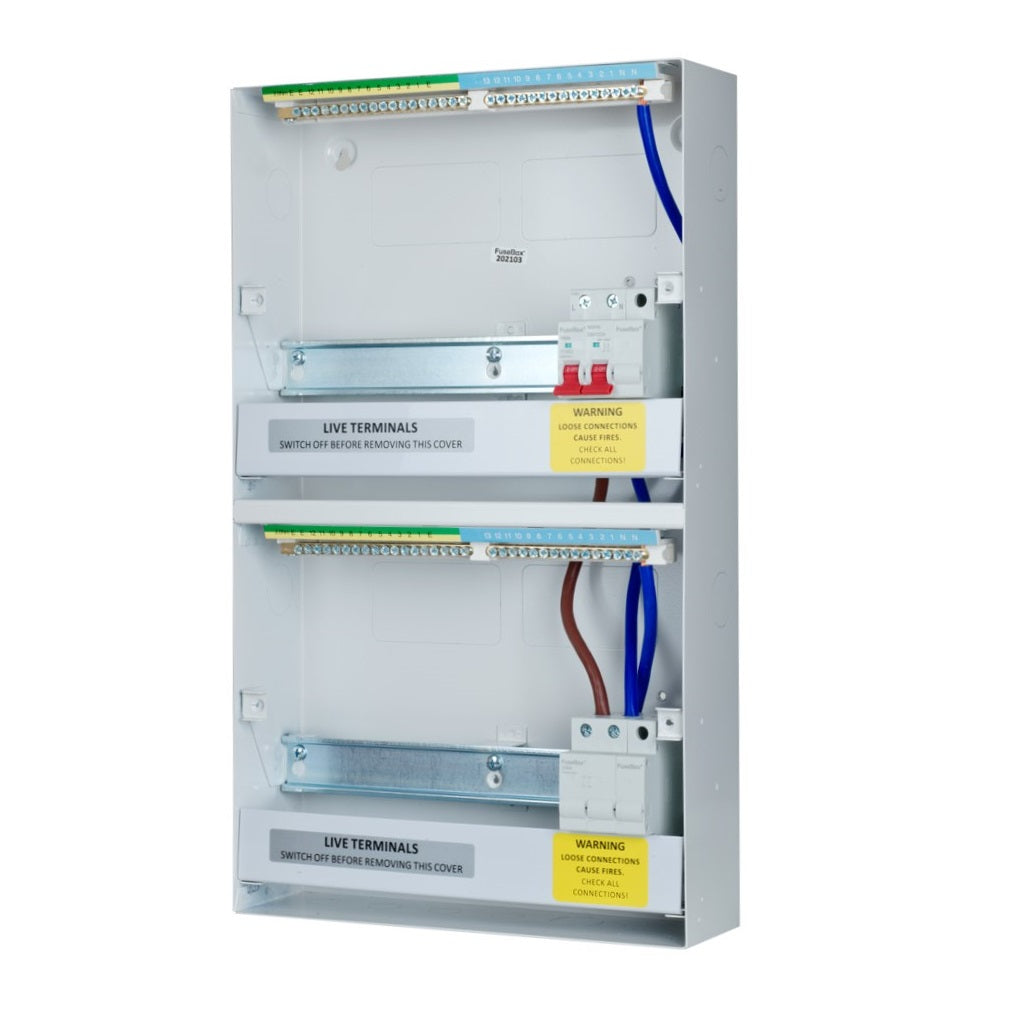The Role of Customer Devices in Efficient Power Management Equipment
Customer systems are indispensable to effective energy monitoring systems, offering as the primary distribution points for electrical power within structures. The development of clever innovations has better improved their performance, permitting for real-time information tracking and nuanced power intake evaluation.
Comprehending Consumer Systems

Recognizing the role of customer units begins with identifying their important feature in safeguarding electric systems. By isolating mistakes within certain circuits, consumer devices stop extensive blackouts and potential fire dangers. This isolation is attained via making use of circuit breakers that trip or fuses that strike when a fault is spotted, thus removing the electrical circulation to the influenced circuit.
In addition, consumer units promote the well organized circulation of power, enhancing the performance of power use. They allow for the methodical monitoring of electrical lots, which can be especially crucial in business and industrial settings where demand can vary significantly. Effectively maintained consumer units add to the durability of electric systems and help in decreasing downtime created by electric failures, inevitably sustaining the smooth operation of energy-dependent centers.
Smart Technologies Combination

A key advantage of smart consumer units is their ability to take advantage of advanced formulas and machine understanding for anticipating analytics. This permits preemptive adjustments based on use patterns, weather projections, and various other variables, significantly boosting general efficiency. Clever consumer systems assist in demand reaction programs, where power use can be dynamically changed during height periods to stabilize the grid and decrease expenses.
The assimilation of sustainable power sources, such as solar and wind, is additionally streamlined via smart consumer systems. By smartly handling the intermittency of these resources, these devices make sure a balanced and dependable power supply. Additionally, smart customer units improve user involvement by giving comprehensive insights and push-button control abilities through mobile applications, promoting a much more positive technique look at here to energy preservation and sustainability.
Monitoring Power Intake
Building on the capabilities of smart innovations assimilation, keeping track of power usage comes to be a crucial emphasis within energy monitoring systems. By leveraging innovative metering infrastructure (AMI), real-time information on power use can be gathered at granular levels, giving important understandings into consumption patterns and peak need durations.
Smart meters and Internet of Points (IoT) gadgets play a critical duty in this surveillance process. These gadgets can track energy usage in real-time, sending data to central systems for evaluation.
The integration of these technologies not only empowers consumers with thorough information about their power usage but additionally supports utility suppliers in taking care of tons distribution more effectively. Ultimately, exact and continuous tracking is vital for accomplishing energy efficiency, expense savings, and sustainability goals within power management systems.
Optimizing Home Appliance Use

One reliable method entails identifying optimal and off-peak hours to shift energy-intensive tasks, such as washing or dishwashing, to times when power demand is lower. This not just decreases strain on the grid yet likewise takes see this website advantage of reduced energy tariffs. Furthermore, integrating maker discovering formulas enables anticipating maintenance, making certain home appliances operate at ideal effectiveness and prolonging their lifespan.
Power management systems can additionally incorporate user-specific choices and actions to customize home appliance use routines. Wise lights systems can readjust brightness based on tenancy and natural light schedule, while Cooling and heating systems can keep comfort levels without too much energy usage.
Supporting Sustainability
Promoting sustainability within energy administration systems involves not only boosting effectiveness but likewise cultivating ecologically liable methods. Consumer systems are essential to this procedure, as they offer real-time information and control devices that allow customers to check and decrease their energy intake. By leveraging sophisticated technologies, consumer units can determine energy-saving opportunities and help with the combination of sustainable energy sources like solar and wind power.
One see here now important aspect of advertising sustainability is informing customers on the advantages of accountable energy usage. With in-depth insights provided by customer systems, individuals can make informed decisions that minimize their carbon footprint. These devices can recommend optimal times for running high-energy home appliances based on grid demand and sustainable power accessibility, consequently lowering reliance on fossil gas.
Furthermore, customer units support the adoption of clever grid innovations, which enhance the overall performance and reliability of power circulation. By making it possible for two-way communication between consumers and utility companies, these systems can dynamically adapt to power demands, decreasing waste and advertising the use of lasting power techniques.
Verdict
Consumer systems, as integral elements of power administration systems, dramatically boost electrical security and efficiency within buildings via circuit protection and clever technology combination. Furthermore, the incorporation of sustainable energy sources promotes sustainable practices, adding to lowered overall power intake and reduced carbon impacts.
Advances in smart technologies have reinvented the capabilities of power monitoring systems, particularly through the integration of wise customer units.Structure on the capabilities of wise technologies integration, monitoring power usage comes to be a critical focus within power monitoring systems.Efficient appliance usage optimization is a critical part of energy management systems, intending to enhance effectiveness and lower unneeded energy consumption.Customer devices, as important parts of power administration systems, significantly enhance electrical safety and efficiency within buildings with circuit defense and clever technology integration. Furthermore, the consolidation of sustainable power sources promotes lasting techniques, adding to decreased total power consumption and reduced carbon footprints.